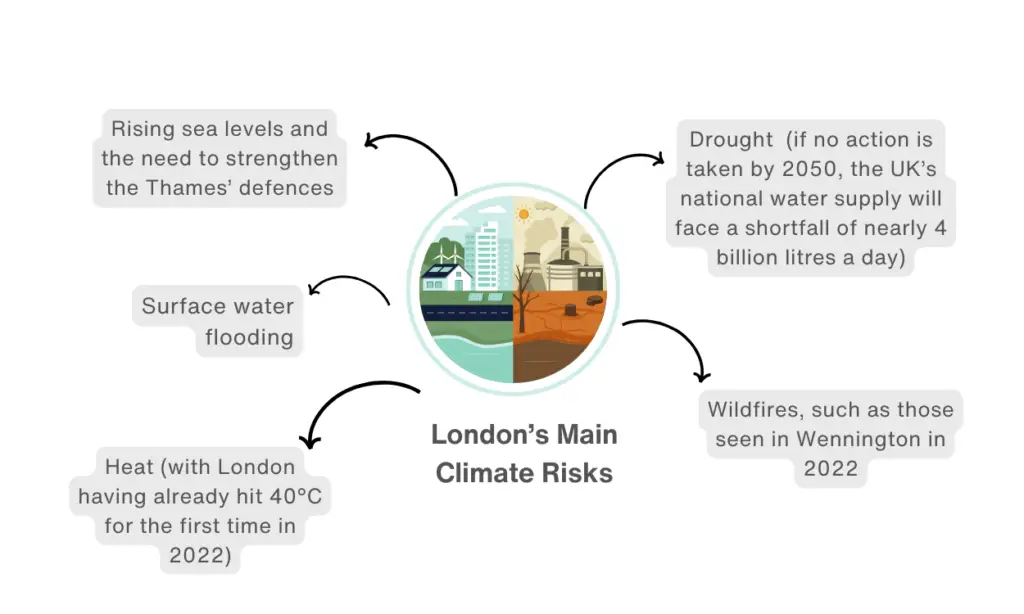 Kate Kyriakopoulou
Kate Kyriakopoulou

Climate change is a worldwide occurrence, significantly affecting urban environments. Elevated global temperatures result in rising sea levels and a heightened frequency of extreme weather phenomena like floods, droughts, and storms, facilitating the proliferation of tropical diseases. These ramifications substantially burden essential urban services, infrastructure, housing, livelihoods, and public health. Primarily, marginalized, and underprivileged communities bear the brunt of these consequences, lacking adequate resources to mitigate them effectively. The confluence of heightened susceptibility and increased exposure underscores the growing risk urban populations face due to climate change impacts.
As per the United Nations, urban locales are experiencing the impacts of climate change while also playing a significant role in exacerbating the escalating environmental challenges worldwide. Moreover, the United Nations Environment Programme (UNEP) asserts that urban activities are a pivotal contributor to climate change due to their substantial generation of greenhouse gas emissions. With the escalation of natural disasters in frequency and intensity attributable to the ascent in global temperatures, cities previously not considered primary focal points of the climate crisis are now witnessing extreme and occasionally fatal weather phenomena. Such a case is the city of London.
The interim findings of the London Climate Resilience Review, an independent study commissioned by the Mayor of London, have substantiated that London and the United Kingdom lack adequate preparedness for significant climate-related impacts, including severe flooding, extreme heat, and wildfires. These findings underscore a critical deficiency in readiness, posing a potentially lethal threat to the most vulnerable communities.
The Review’s Key findings include:
London’s main climate risks are:

Emma Howard Boyd CBE, Chair of the Review, highlighted that: “London has many good plans and programs to prepare for climate hazards, but we need to recognize that Londoners now face lethal risks, and a step change is needed. Last year was the hottest on record and this is causing chaos and disruption all over the world. London is not immune, as shown by the flash floods in 2021 and a 40-degree heatwave in 2022. “
Urban centers are actively implementing measures to adapt to the effects of climate change. These initiatives aim to safeguard the constructed environment, enhance land-use planning practices, and bolster emergency response capabilities. Notably, cities are undertaking various actions, such as planting trees, implementing green roofs, and creating green spaces to mitigate climate impacts. These endeavors contribute to enhancing air quality and mitigating heat in urban areas. Additionally, the utilization of more permeable ground cover aids in absorbing rainfall, thereby reducing instances of runoff and flooding. Furthermore, certain governmental bodies are employing policy instruments such as building regulations and zoning ordinances to fortify urban infrastructure and protect city residents from the ramifications of climate change.
“Cities are both a hotbed of climate threats and a hotbed of climate solutions. More and more cities are developing adaptation plans, and we’ve seen cutting-edge innovations across the world, from rainwater harvesting systems to green infrastructure. There’s no doubt that the need to adapt to climate change and urbanization can force us to re-imagine how our cities are built – and for the better”, says Jessica Troni, Head of UNEP’s Climate Change Adaptation Unit.
Cities represent significant contributors to climate change, as their activities constitute primary sources of greenhouse gas emissions. Estimates indicate that cities are accountable for approximately 75 per cent of global CO2 emissions, with transportation and building sectors ranking prominently among the primary contributors. Practical mitigation efforts necessitate a coordinated approach across international, regional, national, and local levels. Thus, cities must be integrated into the solutions framework for combating climate change.
Many cities are taking substantive actions by transitioning to renewable energy sources, adopting cleaner production methods, and implementing regulations or incentives to mitigate industrial emissions. Such measures not only contribute to emission reduction but also ameliorate local pollution stemming from industrial and transportation activities, thereby enhancing urban air quality and the well-being of urban inhabitants.
At EcoSkills we aspire to equip professionals with the skillsets that they need to improve their climate strategy and align it with the global goal of reducing and eliminating emissions. Making the fight against climate change a default reflex for global businesses is not just about preventing environmental degradation; it’s also about securing a sustainable future for the business and the city in which it operates. Companies that recognize and act on this imperative can benefit from increased resilience, improved customer relationships, innovation, and compliance advantages, all of which can contribute to long-term success and profitability.
